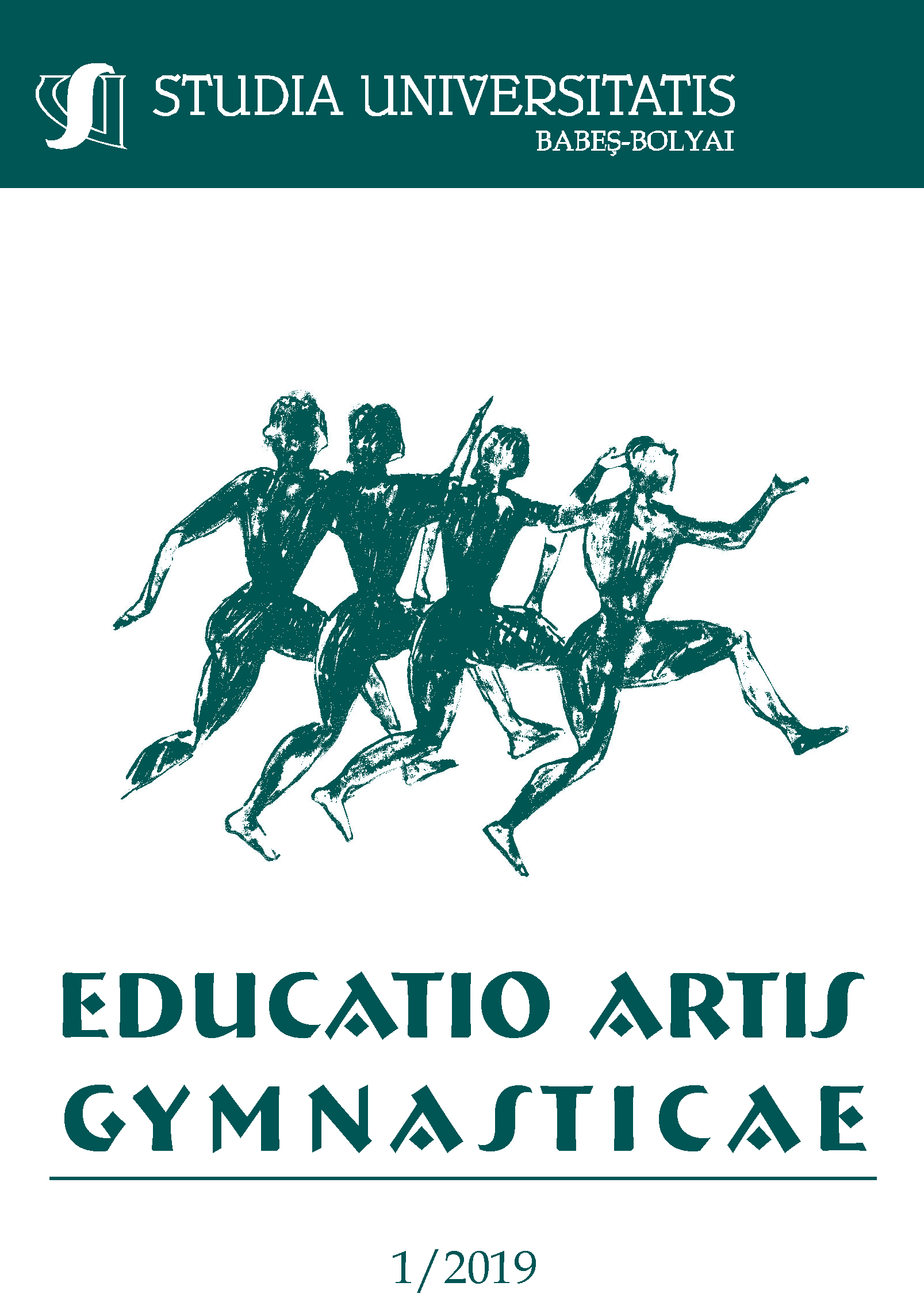SPORT CLUBS INTERACTION WITH THE FANS USING SOCIAL MEDIA COMMUNICATIONS. CASE STUDY AT SCM CRAIOVA
DOI:
https://doi.org/10.24193/subbeag.64(1).03Keywords:
social media, sports, marketing, internet, communication.Abstract
Today, the process of communication has come to be seen all together differently to how it was viewed a few decades ago, because contemporary society has greatly changed the way people interact with each other. Communication has stretched its arms to all areas, starting with businesses, where the human relations sector is quite important, up to sport organizations in which communication with the fans is essential. Organizations in all areas have become aware of the need for communication, realizing the strategic role that communication plays in achieving goals. The communication strategy is the defining lines of the organization’s attitude and conduct in order to achieve its communication goals and thereby performance goals. The paper aims to present some theoretical aspects regarding the notions of social media and the connection between social media communications and the sports clubs, emphasizing how this connection leads to the increase of the awareness, with a practical example at the handball club SCM Craiova.
REZUMAT. Interacțiunea cluburilor sportive cu fanii folosind comunicarea prin social media. Studiu de caz la SCM Craiova. Astăzi, procesul de comunicare a ajuns să fie privit în totalitate diferit față de modul în care a fost văzut în urmă cu câteva decenii, deoarece în societatea contemporană s-a schimbat foarte mult modul în care oamenii interacționează unul cu celălalt. Comunicarea și-a întins brațele în toate domeniile, pornind de la sfera afacerilor, unde sectorul relațiilor umane este destul de important, până la organizațiile sportive în care comunicarea cu fanii este esențială. Organizațiile din toate domeniile au devenit conștiente de nevoia de comunicare, realizând rolul strategic pe care îl joacă comunicarea în atingerea obiectivelor. Strategia de comunicare reprezintă liniile de definire a atitudinii și comportamentului organizației pentru a-și atinge obiectivele de comunicare și, prin urmare, obiectivele de performanță. Lucrarea urmărește prezentarea unor aspecte teoretice privind noțiunile de social media și legătura dintre comunicarea prin social media și cluburile sportive, subliniind modul în care această conexiune conduce la creșterea notorietății, prin prezentarea unui exemplu practic la clubul de handbal SCM Craiova.
Cuvinte-cheie: social media, sport, marketing, Internet, comunicare
References
Apostu P., Şerban, C., Şanta C. (2009), Sports competition management, Studia Universitatis Babes-Bolyai, Educatio Artis Gymnasticae, 54 (1), pp, 3-7.
Barbu, M.C.R. (2010). Marketing in sport. Craiova: Editura Universitaria.
Barbu, M.C.R., Popescu M.C. (2018). Branding in sport. Annals of the „Constantin Brâncuşi” University of Târgu Jiu - Economy Series, no. 5, 35-41.
Bauer, H.H., Stockburger-Sauer, N.E., Exler, S. (2008). Brand image and fan loyalty in professional team sport: A refined model and empirical assessment. Journal of Sport Management, pp.205 – 226.
Bocean, C.G. (2008). Auditul resurselor umane. Bucureşti: Editura Tribuna Economica.
Constantinescu, D. (2008). Management. Functions. Structures. Processes. Craiova: Editura Universitaria.
Coyle, P. (2010). Teams active in social media build strategic advantage. Street and Smith’s Sports Business Journal, 12 (18).
Fillis, I. and Mackay, C. (2013). Moving beyond fan typologies: The impact of social integration on team loyalty in football. Journal of Marketing Management pp. 1–30.
Florea D.L., Barbu C.M., Barbu M.C.R. (2018). A model of fans’ reaction to resurrected brands of sport organizations. International Journal of Sports Marketing and Sponsorship, Volume 19, Issue 2, pp. 127-146.
Holmes, K., McLean, R. and Green, G. (2012). Crafting a future online: A study of how independent craftspeople adopt social media and web technologies. Journal of Systems and Information Technology, Emerald Group Publishing Limited, pp. 142–154.
Hookway, N. (2012). Entering the blogosphere: some strategies for using blogs in social research. Qualitative Research, pp. 91–113.
Miah, A. (2017). Sport 2.0: Transforming sports for a digital world. Cambridge: The MIT Press.
Peters, K., Chen, Y., Kaplan, A.M., Ognibeni, B. and Pauwels, K. (2013). Social media metrics - A framework and guidelines for managing social media. Journal of Interactive Marketing, pp. 281–298.
Popescu, R.I. (2009), The branding potential of Bucharest. Strategy and success factors, Theoretical and empirical researches in urban management 4 (13), pp. 177-193.
Smith, K. (2007). What is Digital Marketing?. Retrieved from http://digitalmarketing101.blogspot.com/2007/10/what-is-digital-marketing.html. Accessed January 30, 2019.
Smith, K. T. (2012). Longitudinal study of digital marketing strategies targeting Millennials. Journal of Consumer Marketing. Emerald Group Publishing Limited, pp. 86–92.
Somacescu, S.M., Barbu, C.M. (2017), On the Role and the Determinants of Internal Organizational Communication. Eurasian Journal of Business and Management 5 (4), 1-11.
van Dijck, J. (2013). The Culture of Connectivity: A Critical History of Social Media. Oxford: Oxford University Press.
Weinstein, A., Lejoyeux, M. (2010). Internet addiction or excessive Internet use. The American Journal, PubMed 277–283.
Downloads
Published
How to Cite
Issue
Section
License
Copyright (c) 2019 Studia Universitatis Babeș-Bolyai Educatio Artis Gymnasticae

This work is licensed under a Creative Commons Attribution-NonCommercial-NoDerivatives 4.0 International License.



